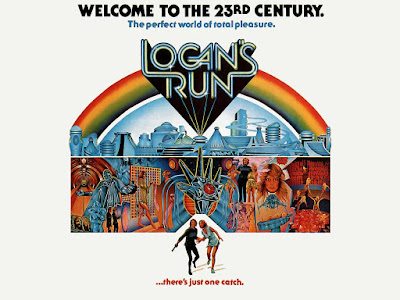Marvel's Science Fiction of the 70s: Killraven
Earlier this week I saw a tweet by @deanetts about the 70s era Marvel Comics character Killraven (featured in the title Amazing Adventures) and it got me thinking about that series. As a 70s kid (a Bronze Age Baby, as I was once called), I have an unabashed love of Marvel's output from 1970 to about 1977. That's the sweet spot of comics for me. As a SF fan, I was always excited to see SF elements worked into super-hero fare, but books with straight up science fiction premises were a real treat.
I came late to Killraven. Going back through my collection, I can tell the difference between the issues I picked up off the stands and the ones I bought as back issues (I bet most of you can do this too). It looks like I started reading the series with issue 29, which, since it started with issue 18, was a fair way into the run. But I recall that it wasn't too hard to understand what was going on. The series took H.G. Wells' War of the Worlds and imagined that the Martians returned in the far-future year of 2001. They quickly defeated mankind and enslaved them, making some humans serve as gladiators for their amusement. By 2017, one of these gladiators, with the stage name Killraven (Jonathan Raven) escapes and dedicates himself to fighting back against his Martian oppressors. The concept for the book came initially from then-Marvel editor Roy Thomas, whose love of science fiction and fantasy brought a number of different and exciting titles and characters to Marvel (Conan anyone?). He worked with legendary artist Neal Adams to refine the concept and design the character. But Adams could only complete half of the first issue; Howard Chaykin came in to finish it off. And Thomas was too busy to script the premiere issue, so writer Gerry Conway, who seemed to be attached to every Marvel title at one point or another, came in and got the ball rolling.
The series really took off with the arrival of writer Don McGregor (issue 21) and later, artist P. Craig Russell (issue 27). McGregor was one of the more verbose Marvel scribes of the time -take a look at his run on the Black Panther in Jungle Action from around the same time - which led to pages overflowing with captions and word balloons. But he delivered a complex story which looked at the inhumanity of war, even a futuristic war. Killraven and his fellow freedom fighters were well developed, including the women characters, which was relatively rare in comics at the time. Russell's finely detailed art was distinctive and fit the series well. He was an excellent storyteller, just as adept at showing Killraven fighting the Martian lackeys as he was at depicting quieter moments between characters.
One of the things that appealed to me about the series was the way McGregor slowly peeled back layers to reveal more about the state of the world, and the freemen. For example, it took many issues before we learned the identity of Grok, the grotesque cloned man that Carmilla Frost was so devoted to. Little mysteries like this kept me engaged. I admit, the writing was challenging for me at that young age, but I would read and re-read those comics, absorbing them over time.
Of course, everything about the book just looked cool. There were aliens and monsters, and despite being sci fi, the character designs were still basically in the super-hero vein, with some swords tossed in for good measure. One thing I didn't care for was Killraven's cross-over into the mainstream Marvel universe in Marvel Team-Up #45. I felt like he (and also Deathlok, but that's a subject for another post) should stay in his own universe, separate from the Marvel super-heroes. Marvel already had one dystopian future to worry about with the Guardians of the Galaxy!
Killraven's run ended with issue 39 of Amazing Adventures, but since then, he's popped up in some graphic novels and assorted issues of other Marvel comics. The entire Amazing Adventures run has been collected in Marvel Masterworks form, and in the Essentials black and white format too. It's definitely worth checking out if you enjoy science fiction comics with a dystopian setting.






Yep, the original run of Killraven is fantastic. I had about two issues of the Amazing Adventures run (including the one fill-in issue written by Bill Mantlo) back when it was still coming out, and only read the entire saga about 10 or so years ago in the Essentials volume (I’d love the Masterworks edition, but it’s way out of my price range). I agree that it’s worth seeking out, because it still holds up quite well, and the issues drawn by Russell are particularly gorgeous.
ReplyDeleteBy the way, I’d add that the Killraven mini-series by Alan Davis from the early ‘00s is also worth reading as a sort of alternate take on the character. Granted, it’s nowhere near as good as MacGregor’s but it’s still pretty fun. And the art is so, so pretty…